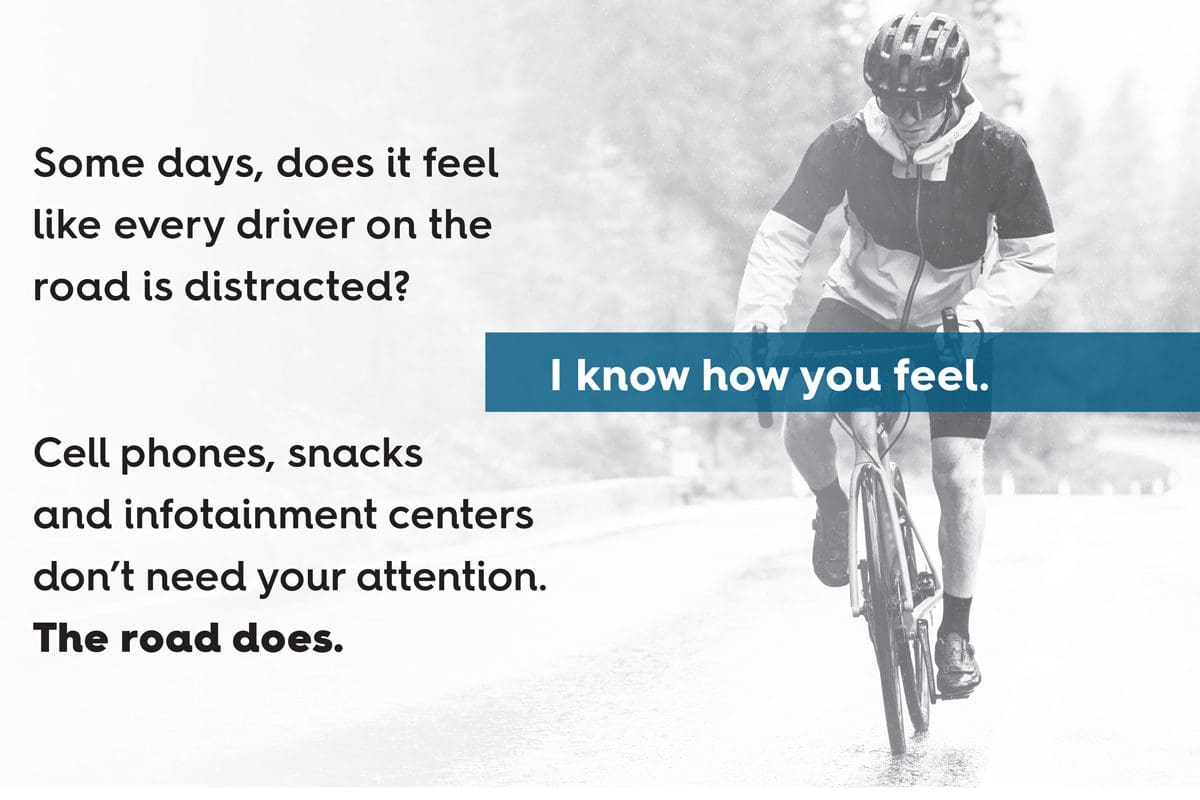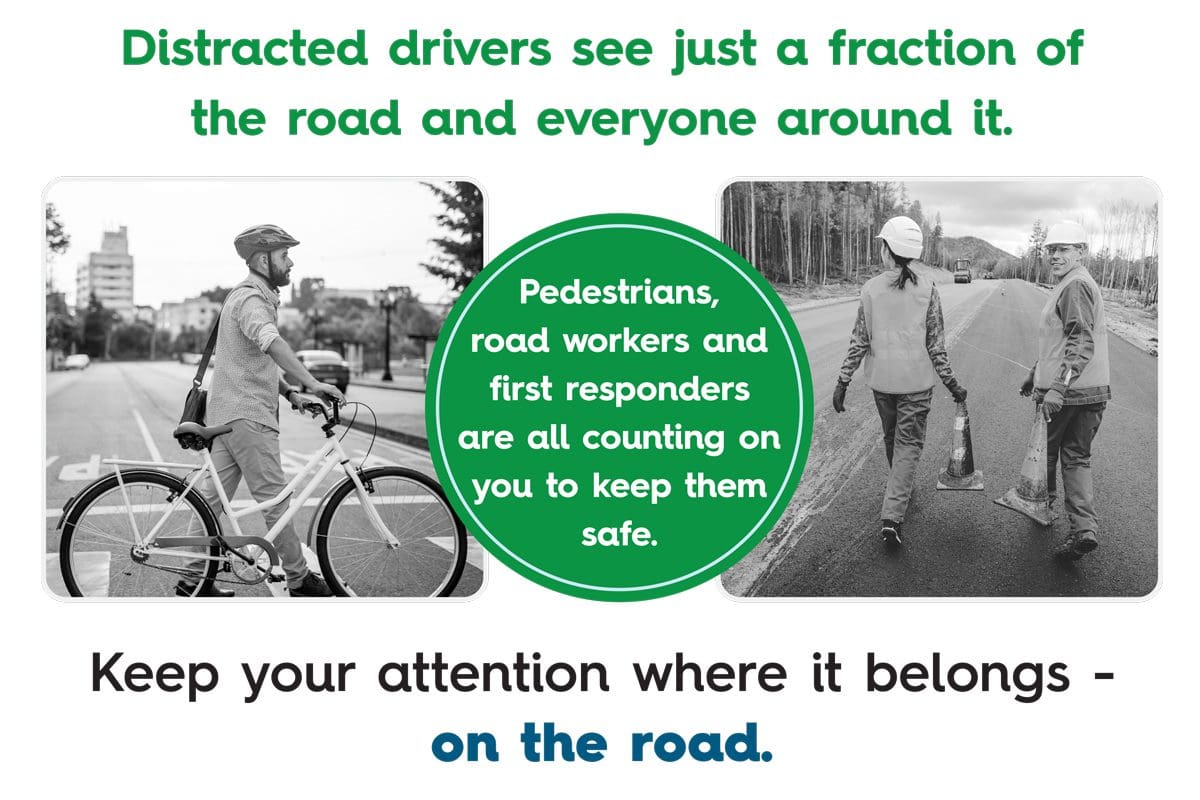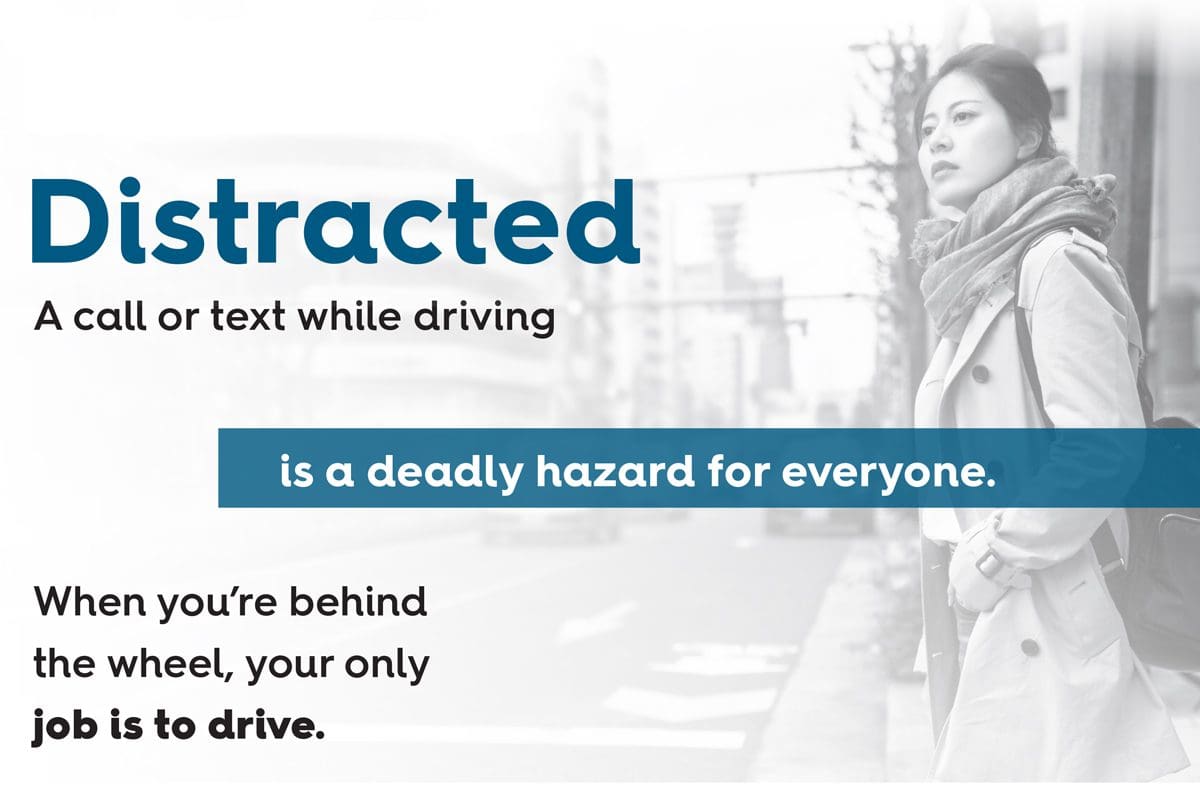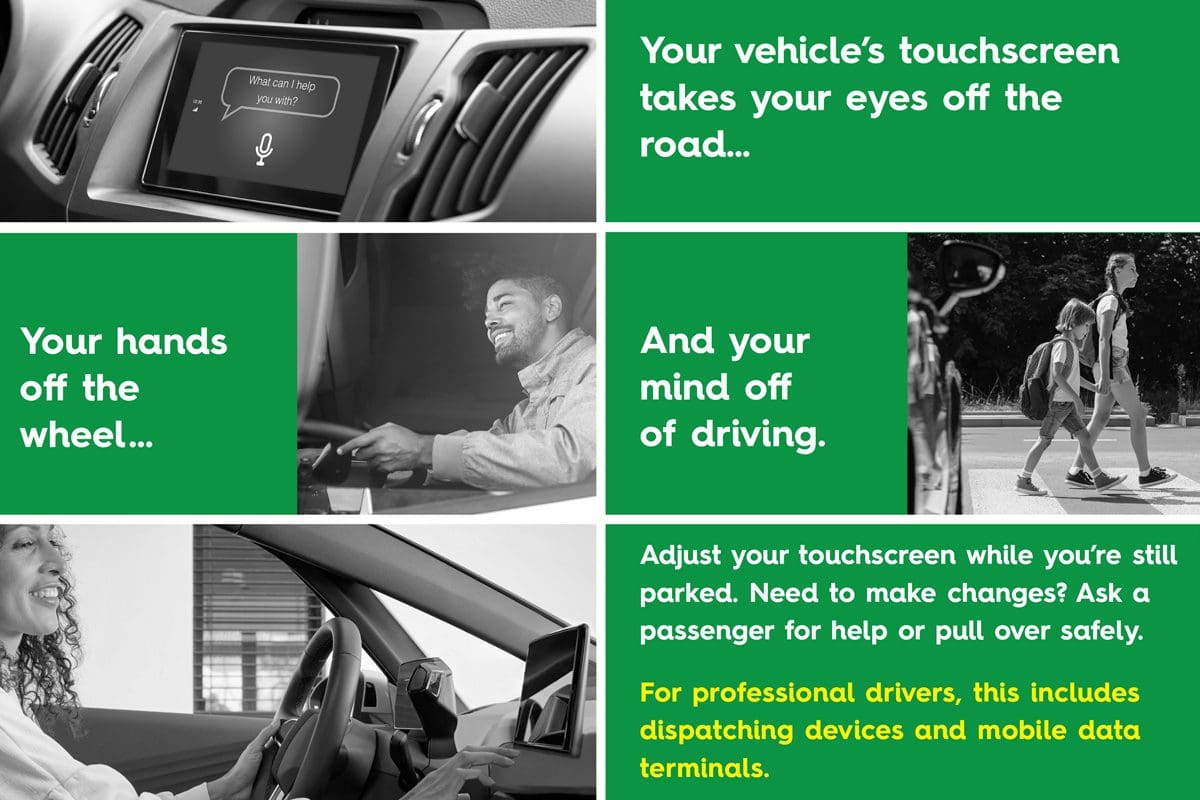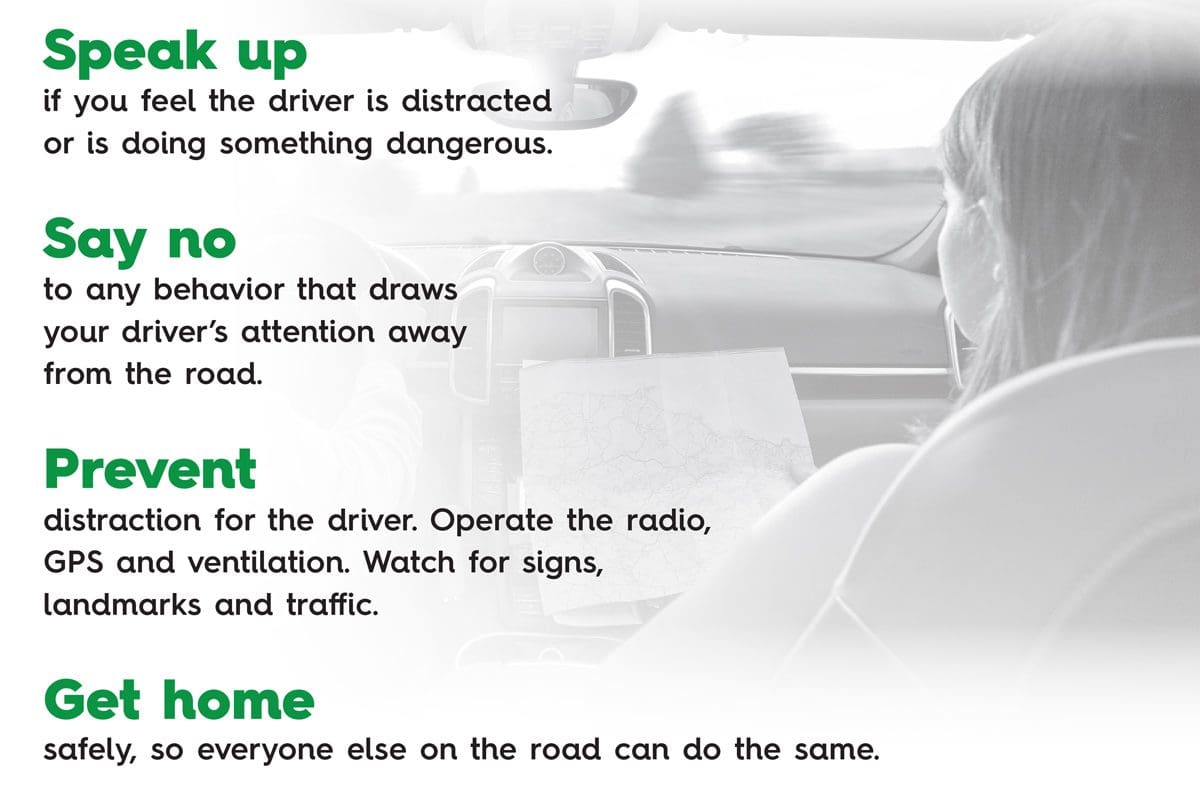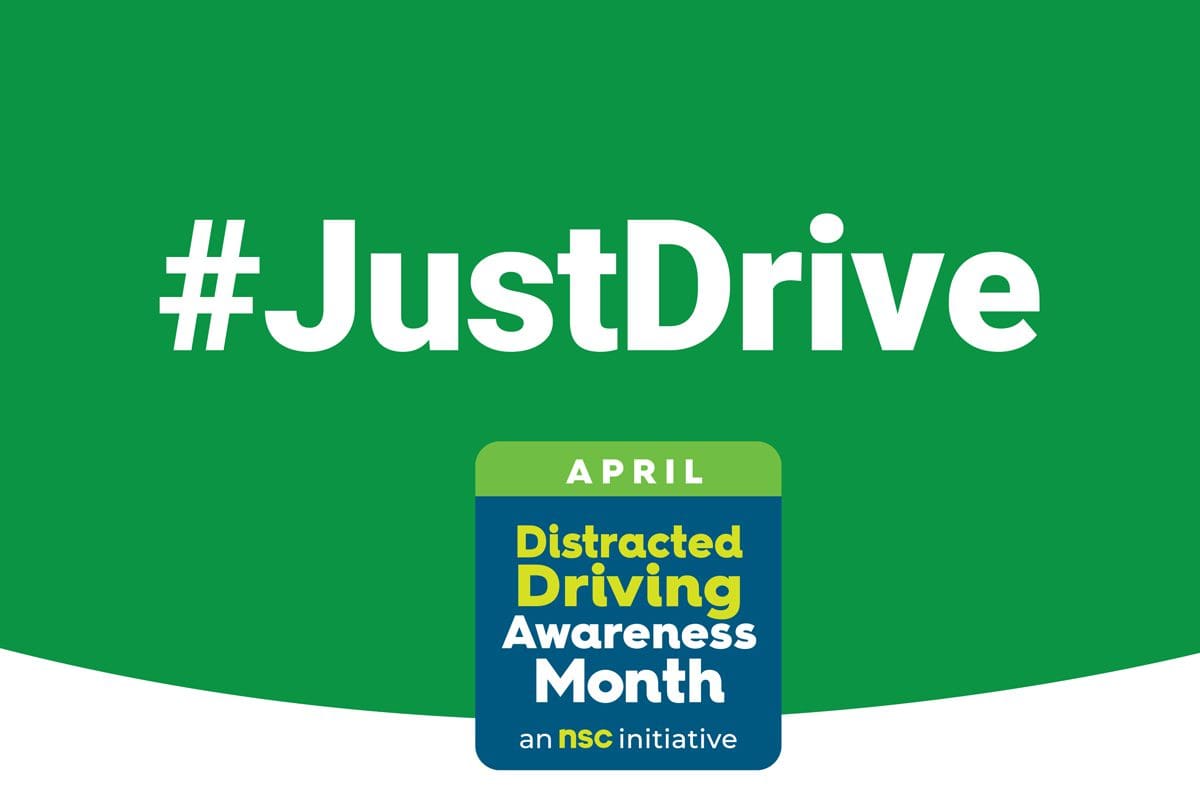

Everyday, we face dangerous risks on roadways.
Common examples include:
Learn to drive Distraction-free!
Before you drive, follow these safety tips:
If you MUST send or receive a text:
If you CANNOT resist the temptation to look at your phone:
Pay Attention to the Laws… or, pay the price!
Talking or texting while driving is one of the most dangerous and deadliest forms of distracted driving. On average, younger drivers ages 16 to 24-years old are more distracted by devices—but we’re all at risk for distracted-driving crashes!
As of 2023, forty-eight U.S. states successfully passed laws making it illegal to text while driving. To learn more about the laws in your state and community, visit the Governors Highway Safety Association at ghsa.org.
Source: National Safety Council (NSC), Traffic Safety Marketing (TSM) and the National Highway Traffic Safety Administration (NHTSA).
When you are behind the wheel… your only job is to drive!
One too many lives have been lost to distracted driving. Today, at least eight people a day are killed in distracted driving crashes. Distracted Driving isn’t just risky for you, it can be deadly for everyone involved — including passengers, nearby drivers and pedestrians, or other bystanders.
According to the National Safety Council (NSC), America’s leading non-profit safety advocate, new estimates of total motor-vehicle deaths show that our roads are the most dangerous they have been in years.
At any given moment, approximately 660,000 drivers are using or manipulating electronic devices such as cellphones and infotainment systems. Regardless of handheld or hands-free, allowing distractions while driving pose dangerous risks for everyone!
If something requires your hands, your eyes or your attention while you’re driving… IT’S A DISTRACTION!
Help Save Lives
Pledge today to #JustDrive and share this vital information with your family, friends and community!
Watch & share this video >>
Learn more at nsc.org/justdrive >>
Source: National Safety Council (NSC) @NatlSafetyCouncil
Each year, NWZAW raises awareness to drive safely through work zones.
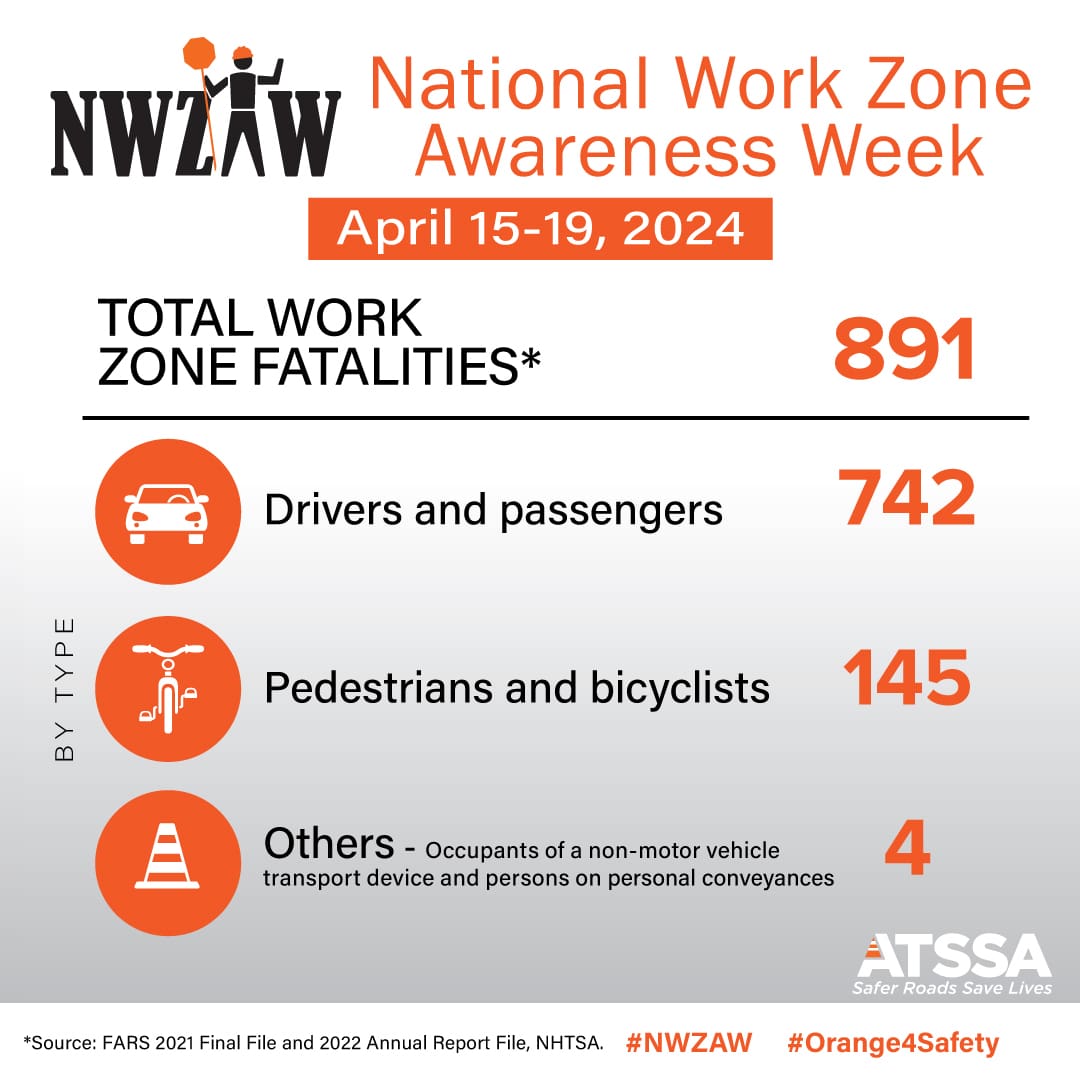
Whether you are a driver or pedestrian, it is vitally important to:
• Stay Alert
• Slow Down
• Use Extra Caution
• Just Drive
Learn more at NWZAW.org >>
Source: American Traffic Safety Services Association (ATSSA) and National Work Zone Awareness Week (NWZAW).
According to the Governors Highway Safety Association (GHSA), speeding, distracted driving and impaired driving during the COVID-19 pandemic all played a significant role in the increase of Pedestrian deaths (more than 20%) in the first half of 2020.
Whether you’re a PEDESTRIAN or a DRIVER — work together to keep everyone safe!
Follow these helpful tips:
Source: National Safety Council (NSC) and Governors Highway Safety Association (GHSA).
The Washington State Patrol (WSP), Washington Traffic Safety Commission (WTSC), and partner law enforcement agencies across the state participate in a statewide “90 Dangerous Days” campaign with aim to reduce serious injuries and fatalities on Washington state roadways.
Historically, June 9 – September 7 has yielded Washington state’s highest consecutive 90-day stretch for traffic-related fatalities. On average, this timeframe accounts for 31 percent of all traffic deaths statewide. Those at risk are not just drivers – but also vulnerable roadway users such as pedestrians, bicyclists and motorcycle riders.
Top contributing circumstances to fatality collisions include:
Source: Washington State Patrol
Help make our roadways a safer place:
PLAN AHEAD before you drive. Check for local traffic conditions and pack your patience – especially if you are traveling in unfamiliar areas.
SECURE ALL ITEMS before you drive. Heading on a summer road trip? Make sure all of your belongings are stowed safely.
FOCUS ON DRIVING when behind the wheel. Always buckle up, adhere to posted speed limits, drive sober, and stay distraction free.
BE ALERT for our vulnerable road users. This includes pedestrians, motorcycle riders, bicyclists – we all share the road!
Source: Washington State Patrol
Source: National Safety Council (NSC), Traffic Safety Marketing (TSM), National Highway Traffic Safety Administration (NHTSA), U.S. Department of Transportation Federal Highway Administration (FHWA) and the Washington State Department of Transportation (WSDOT).
Share this vital information with your network:
At a Glance >>
National & State Traffic Data >>
Work Zone Traffic Crash Trends & Statistics >>
Worker Fatalities & Injuries at Road Construction Sites >>
Driving Through (WA State) Work Zones >>
Download Your State’s FREE DMV Handbook >>
Download Your State’s FREE CDL Manual >>
National Traffic & Road Closure Information >>
Source: National Work Zone Safety Information Clearinghouse, a project of the ARTBA Transportation Development Foundation; the Washington State Department of Transportation (WSDOT); and Driving Tests.
As America’s leading nonprofit safety advocate, the National Safety Council (NSC) is focused on eliminating the leading causes of preventable injuries and deaths. Having pioneered the nation’s first Defensive Driving Course and trained over 80 million drivers, NSC continues to be the most trusted name in defensive driving training in the United States.
NSC’s Defensive Driving Courses are hosted online and deliver the most relevant, leading-edge content to motivate and educate drivers to be safe and responsible in avoiding collisions, crashes, injuries or worse.
Learn more at nsc.org >>
Source: National Safety Council (NSC).
The extreme loss of life on our roads from distracted driving and human mistakes is a national crisis. According to the Federal Highway Administration (FHWA), “zero” is the only acceptable number of deaths on our nation’s roads. Everyone must accept that fatalities and serious injuries are unacceptable and preventable.
Zero is our goal — a Safe System is how we get there!
Reaching zero deaths requires the implementation of the Safe System approach (vs Traditional Road Safety Practices) which places safety first and foremost in our road systems.
Implementing the Safe System approach is our shared responsibility, and we all have a role. It requires shifting how we think about transportation safety and how we prioritize our transportation investments.
Learn more: transportation.gov
Source: U.S. Department of Transportation Federal Highway Administration (FHWA).
Visit our Digital Resource Center to learn more about Distracted Driving Awareness and Motor Vehicle Safety — plus, more injury and violence prevention topics year-round!

